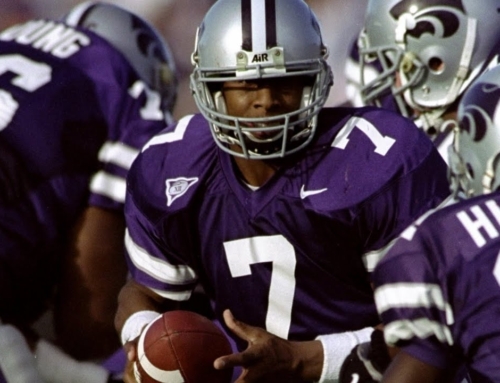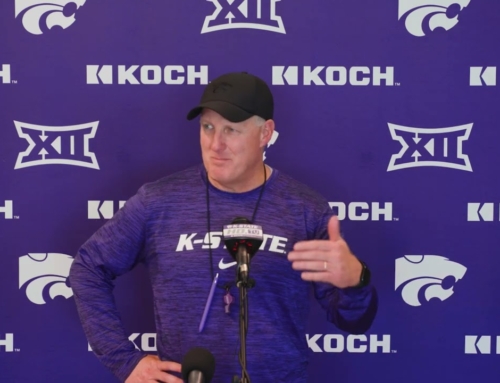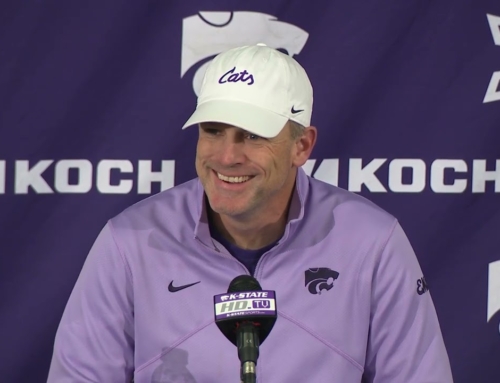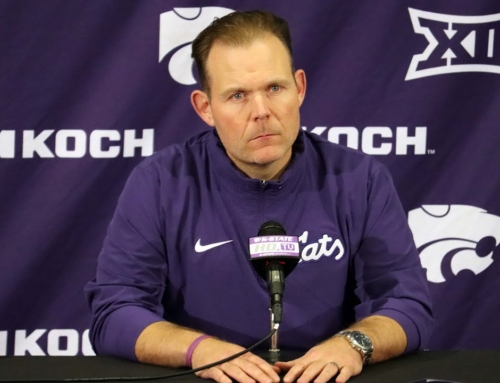Caring for your horses is something you should take seriously every step of the way, literally.
Dr. Dylan Lutter, Kansas State Clinical Professor of Equine Performance Medicine and Surgery, tells KMAN that horse lameness is one of the most common reasons horses are brought into the clinic.
“It’s a clinical sign that we associate, typically, with pain,” Lutter says. “So anytime there is pain in a horse’s leg and it’s not moving correctly, that’s what lameness is.”
He adds that there are a wide range of symptoms for horse lameness, and says they are all important to keep an eye on because the sooner diagnoses the sooner you can get appropriate treatment. Lutter says one easy test to check for lameness and its location is the “down on sound” test.
“As your horse is trotting, if you notice, the head is bobbing up and down and you can nod your head with it, nod your head down. Whatever leg is on the ground when you’re down, that’s the sound one.”
While horse lameness is a common issue among horses, handling cuts and wounds is also important.
Lutter says the first step when dealing with a cut or wound is to check to see how much bleeding their is and see if you can stop it. He says acting fast with cuts and wounds can be crucial, especially if they are on the legs of the horse.
“The stress and strain that horses put on their legs is integral to being horse, that’s how horses get around and they move the way the do,” Lutter says. “And there’s not a lot of tissue down there, so any cut that goes deeper than the skin is automatically in a really important structure.”
Lutter adds that if your horse has a cut on its’ leg or a severe cut in general, you should contact your veterinarian as soon as possible.
“If there’s anything that is squirting out, that’s a real sign that something needs to happen. You should call your veterinarian right away and then gather up materials that you have at home to place a bandage. You might have synthetic bandage material to use or you can even use simple things like a towel and ACE bandage and wrap it on there to get that bleeding controlled.”
After contacting your veterinarian and receiving treatment for your horse, Lutter says the process doesn’t stop there. He adds that the after treatment is just as important as the treatment itself, and for horse owners there are two big steps in the after treatment process.
“You need to have some sort of stall confinement while their skin heals. It’s not like a person where you can go in and get your cut stitched up and then the doctor will tell you ‘Okay, you can’t go to football practice and you have to wear this splint until we take the stitches out,’ and you just know to regulate your own activity.”
Lutter says when you turn a horse loose, recovering or not, it will try to run like normal. He adds that the second major issue with post treatment in horses is proud flesh.
“A horse, when they have a wound and it’s trying to heal, will develop this tissue that bubbles up above the skin surface and actually stops the wound healing,” Lutter adds. “We have to manage that in several different ways and there are lots of products on the market that you can buy at the local farm store that say they are for proud flesh treatment, when, in fact, they can actually be detrimental to wound healing.”
Lutter says that is one reason why it is so important for horse owners to work with their veterinarian and keep them updated on the healing process so any issues, similar to these, can be detected sooner.
To learn more about horse lameness or to contact the K-State Veterinary Clinic, visit ksvhc.org.
The post Dr. Dylan Lutter talks equine care appeared first on News Radio KMAN.






